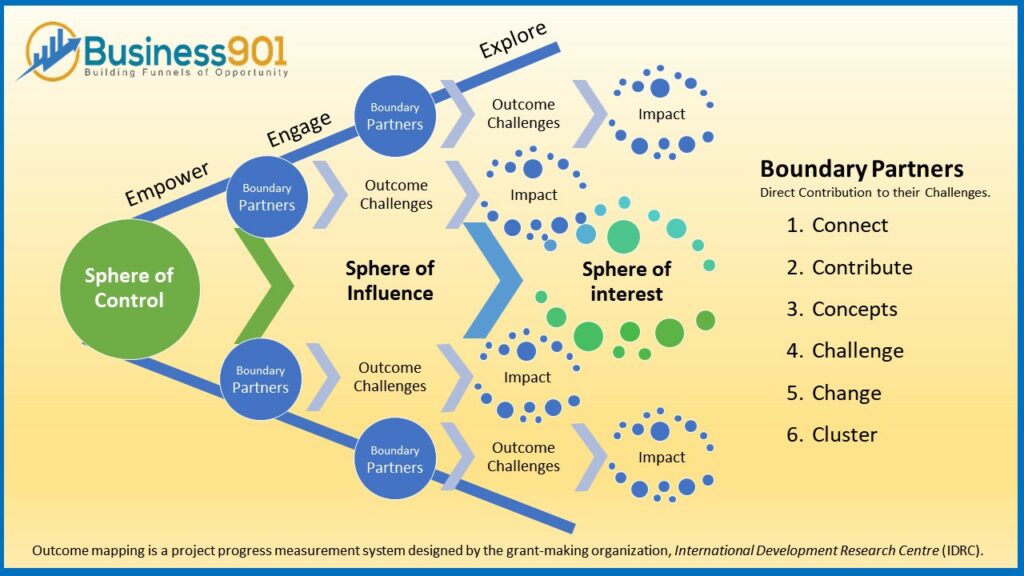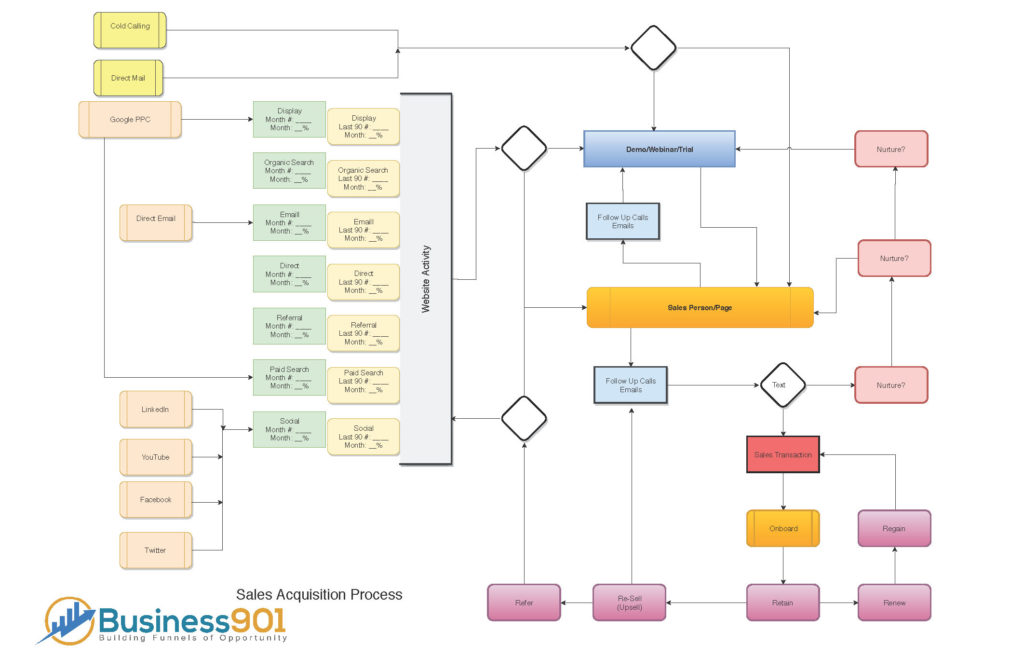Adopting a systems perspective makes visible many of the hidden complexities operating in an organization that might be important targets for change. Reviewing from a system point of view helps generate a set of hypotheses that form the basis for our marketing experiments.
This, in turn, guides our efforts to be tested, organizes results from this activity as an accumulating body of evidence, and creates an evolving framework for collective action across our system.
The traditional means of marketing still reside within most organizations. They still hire people based on the look and feel of inbound marketing and the “deliverables.” There is always an opportunity. However, there is not a step by step method. Innovators, Start-Ups, and even Scaling Businesses look for that formula and try to think of an effective and efficient way to go about it. The problem that exists is that most opportunities are not created; they are discovered. You must venture into the unknown, and most of us are just not Captain Kirk.
Think of the role of an explorer. I go back to explorers of the past that old Columbus, Magellan, Lewis and Clark and Leif Erickson model you might say (And just so we are on the same page lets define the act of exploration as the searching for the purpose of discovery of information or resources). What did they do that others do not? They relinquished the idea of controlling the outcome. When we think of opportunity, it often equates to uncertainty, loss of control. The space that most of us try to define and manipulate others on some desired path to reach/accomplish.
Successful companies do not have a magic formula. If they do, it is a matter of trying more things that put themselves in a better position to recognize or not to recognize opportunity quicker. It is about acting and seeking different opportunities along the journey. Explorers are also masters of saying no or preventing from getting to far drawn off. They are grounded in reality. This reality of understanding their capabilities allows them to seize a moment when it exists. This is often called skill or luck, but it is also about being prepared.
What about exploration at the top of the funnel, not at the bottom? I would argue that adjacent customer behaviors and needs will allow you to explore more than you can handle and is the quickest and most effective way to gain new business. It becomes that yin and yang approach where both ends eventually meet. The most important thing we can do to create opportunity is to set a path and move to action, which most of us do in creating a sales and marketing process (just in the wrong direction).
What we don’t do is the third thing relinquish the idea that we can control the outcome. When we can leave that idea go, we accept and evaluate opportunities based on our capabilities. What is so wonderful is that it expands our understanding by letting go. We see things that we have never seen, opportunities that we have never seen. It reminds of an old Zen saying, “to take a deep breath, you must first exhale.”
We have all been here. We start out creating a landing page, give away something of “value,” and dump the contact into an 8-piece auto-responder over the next 15 to 30 days and then transition them to our regular email base to keep in touch. We might even be sophisticated enough to recognize who clicked on what and segment the list at the beginning or even during those magical 30 days. In the long term, we continue to make offers and build additional auto-responders based on the prospect’s actions.
When a customer’s expectation is looking for marketing analysis and framing it as a one-time project and less than a month, their expectation is Harry Potter level magic. What they get is something more like this: Landing Page + Funnel Creation = Today’s Brooklyn Bridge (oversold + overused). That silver bullet that is next to impossible to obtain, unless you are just plain lucky.
Most marketing efforts FAIL not as a result of the process but because we don’t understand our customers, our prospects, and, eventually, our markets. A study of 30,000 startups that Harvard Business Review did several years ago, they found by a very wide margin that lack of market segmentation or customer definition as the number one reason for product/company failure. This is why it is not good enough to define a market based on just a broad demographic.
The original sales funnel and still the one in general use today were developed by Elias St. Elmo Lewis in 1898. We appeal to as many people as we can and narrow them down to the point of sale. Not a bad run for any system. This was refined by the Fuller Brush people going door to door and refined even more by the next generation of cold-callers. It has even taken another step with the advent of digital and email marketing and social media, which in turn has created an abundance of people selling systems.
It has even taken another step with the advent of digital and email marketing and social media, which in turn has created an abundance of people selling systems. I go back to the Dan Kennedy, Tellman Knudson, and the sideway picture product launch by Jeff Walker. I am up to speed with current thoughts of Russel Brunson, Ryan Deiss, Eben Pagan, Lisa Sasevich, Jeanne Gabelini, Ryan Levesque, Salim Ismail, Verne Harnish, Phil Fernandez (Marketo)and Aaron Ross (SalesForce).
We construct Sales and Marketing Funnels and other tools thinking that we can create a customer/opportunity from it. I am not saying any of this is wrong because just by the actual application of some type of process, we are going to focus and become more effective and maybe even more efficient. However, all basically use the same technique, appealing to mass audiences. With this method, you push out a lot of information, hoping it reaches the right people. Whether it is Inbound or Outbound Marketing, there is still a lot of spraying and praying (preying) going on.
Why do we continue to get undesirable outcomes? Have you ever looked at your sales and marketing from a system perspective? To most, this simple diagram looks complex. However, it is high-level and can be broken down into numerous subsets. You may notice the typical Google Acquisition block at its core, which is very dynamic as the rest of the chart should be. You should be monitoring flows in and out of all the blocks. This way, you can react in practically real-time. For most companies, monitoring a few KPIs and reviewing the rest at a staged interval is fine. But keep in mind that the typical monitoring practice is reviewing closed sales. If your sales cycles are 90 days, your reaction could be as much as 180 days delayed.

Adopting a systems perspective makes visible many of the hidden complexities operating in an organization that might be important targets for change. Reviewing from a system point of view helps generate a set of hypotheses that form the basis for our marketing experiments. This, in turn, guides our efforts to be tested, organizes results from this activity as an accumulating body of evidence, and creates an evolving framework for collective action across our system.
We become disappointed when positive results are not readily apparent, and then we just move on to the next new idea. If we continue to seek improvement in the ways we have always done, we are likely to continue to get what we have always gotten. This should trouble us.
The typical marketing system is brittle, not malleable. However, markets are not deterministic. They cannot be analyzed, predicted, and processed using cause and effect. This thinking still resides mostly because of a lack of articulated alternative, which is inherently difficult in a complex-adaptive world. Markets as a system (Systems Thinking), not a marketing system, constantly evolve, partly by random “emergence” and partly by market shaping. The difference in thinking is that they are part of the market, rather than marketing to a market.
Markets have always been complex and socially constructed. In the future, we will have shift out strategic thinking to focusing on context (definition of the market based on who our customers are), value creation and cooperation in the area of use, and non-predictive strategizing and experimentation.

